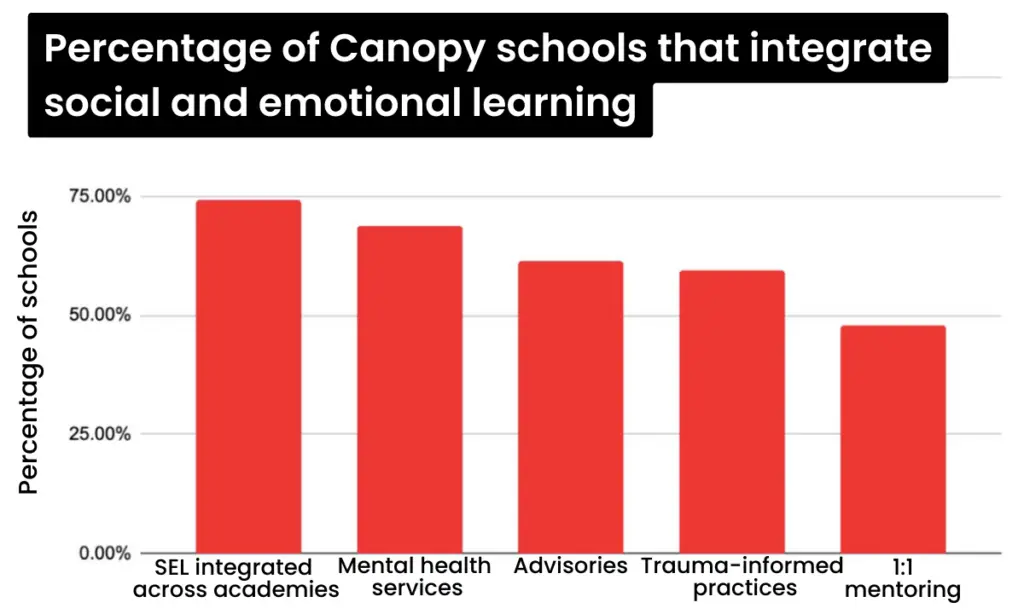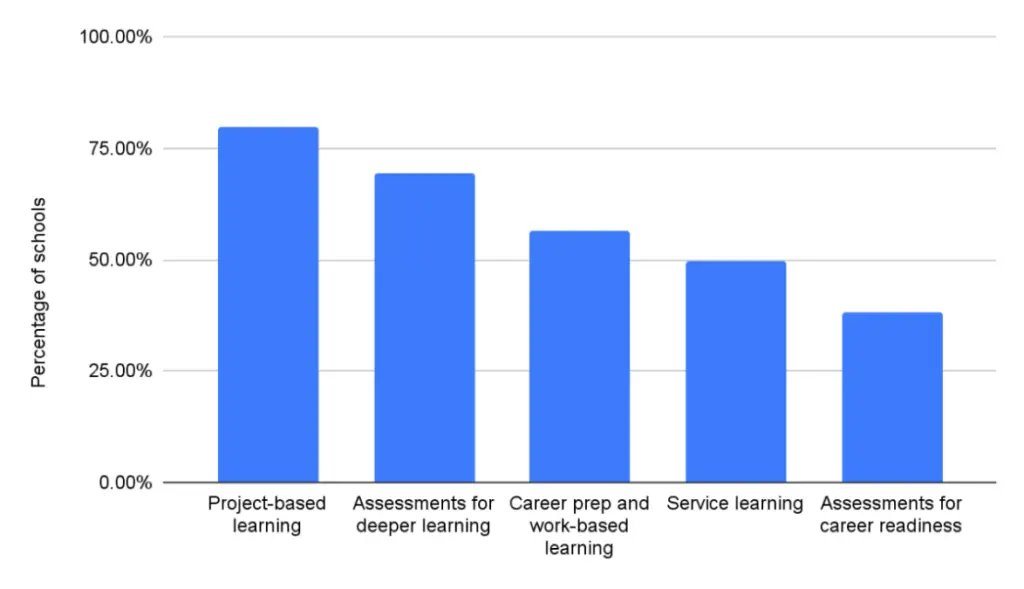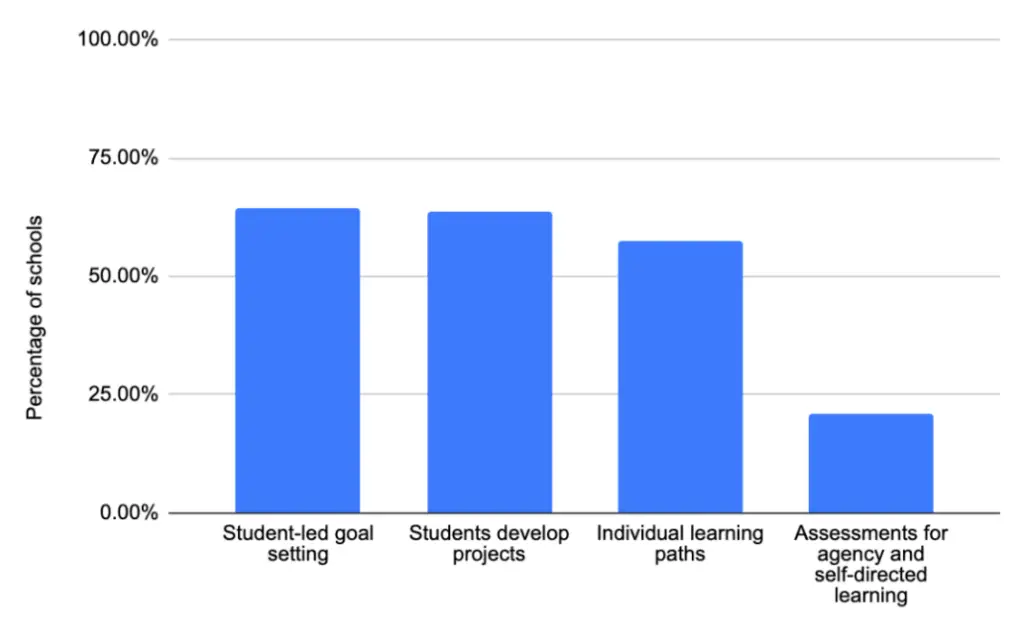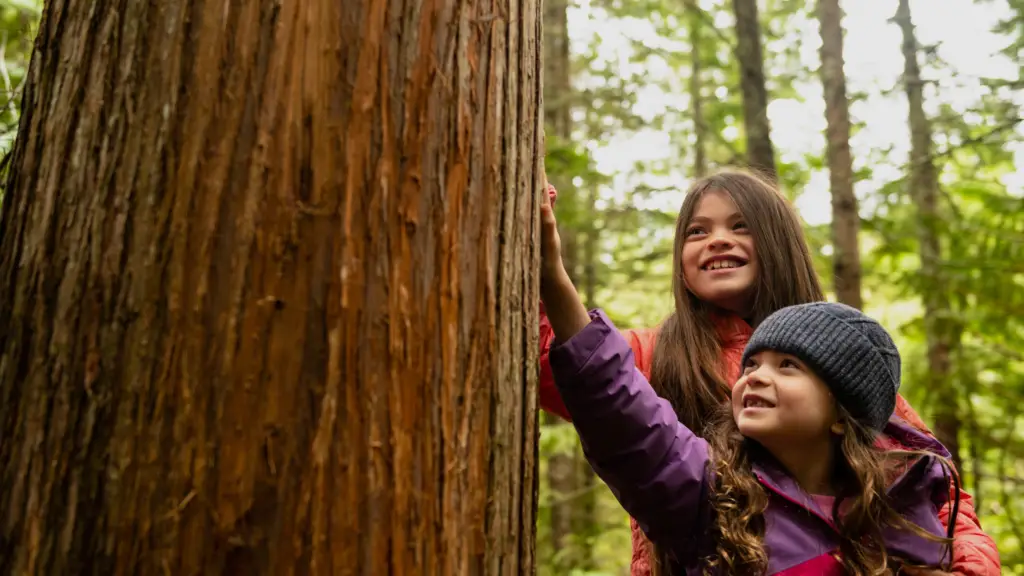This piece was originally published in The 74.
Waite: Changing the DNA of how schools educate students is hard, long-term work. A diverse set of 251 schools are showing what that work looks like.

In the aftermath of the pandemic, lawmakers, researchers and advocates have expended enormous efforts to determine what the American public, particularly kids and families, want from their schools. Several recent surveys suggest that what they want may be changing — or at the very least, what they want looks different from what traditional public schools are designed to provide.
Young people have made it clear they want safe environments that support their well-being, and most adults now believe schools should teach a range of practical skills, not just academics and college prep. Students also want more choice over what they learn, and they say they’re most engaged by relevant and customized schoolwork, according to a survey by the education nonprofit Transcend.
Changing the DNA of how schools educate students — much less what purpose they serve — is hard, long-term work. But a diverse set of schools are already demonstrating what that work looks like. A fresh scan of hundreds of these schools shows that they commonly prioritize student relationships and well-being, focus on cultivating diverse skills beyond traditional academics and offer learning experiences with more student choice and relevance.
The Canopy project, a collaborative effort to share information about K-12 innovation, recently published data from a survey of leaders in 251 schools. These were nominated by a diverse group of experts for their promising efforts to design equitable, student-centered experiences for young people. Canopy data aren’t a representative sample of learning environments in the United States, and the project doesn’t require participants to report on student outcomes. Instead, this is a snapshot of schools with reputations for pushing the boundaries of what’s possible.
Innovative schools focus on student relationships and wellness
Nearly three-quarters of the schools in Canopy indicate they’re prioritizing connection and community as a key element of students’ experiences.
For some (61%), that means designing advisories where groups of students meet regularly with adult advisers to set learning goals, reflect on progress and build relationships. For instance, at Blackstone Academy, a public charter school in Pawtucket, Rhode Island, the same students meet daily with the same adult leader for multiple years, providing an opportunity to form deeper relationships than are often possible in conventional schools.
Many other Canopy schools integrate social and emotional learning throughout the academic curriculum. They offer mental health supports, train adults to recognize and respond to students who are impacted by traumatic stress, and pair students with an adult in school for regular individualized mentoring.
Innovative schools emphasize practical skills beyond pure academics
Almost 7 in 10 schools report nurturing not only learning, but human development, character, health and well-being. Four in five schools in Canopy report using project-based learning, an approach that builds skills like collaboration and critical thinking alongside core content. Most schools also report assessing those soft skills (often called deeper learning assessments). A majority (57%) say they engage students in career-oriented learning opportunities, like interview practice or apprenticeships, and about half report that students learn through community service. Smaller proportions of schools assess career-readiness skills (38%) and self-directed learning skills (21%).

For instance, Richland Two Institute of Innovation (R2i2) in Columbia, South Carolina, involves students in project-based experiences with community partners and businesses to develop collaboration, communication and leadership skills. In Houston, the nonprofit 8 Million Stories offers individualized and work-based education programs for vulnerable and disconnected students, helping them earn their high school equivalency diplomas, develop job readiness skills and access health, legal and other supports.
Innovative schools offer students choice and relevance
Almost two-thirds of schools reported prioritizing student self-direction, meaning that students set and pursue learning goals largely independently from adult oversight. About the same number reported prioritizing relevance, meaning that students are learning topics and skills that directly relate to their lives and the world around them. For instance, at Escuela Verde, a charter high school in Milwaukee, all students design an “action research” project to address problems in their communities related to environmental justice.
Like Escuela Verde, the majority of schools in Canopy say their students set and pursue their own learning goals, such as by designing their own projects and choosing what they want to learn, breaking from the conventional idea that every student must learn the same things at the same time. A small but notable minority of schools are working to assess the skills that students develop to direct their own learning.

Of course, American families aren’t monolithic and don’t agree on a single vision for how schools need to change. Similarly, innovative learning environments don’t all look the same: In our analysis from last year, we saw independent schools most often prioritizing highly individualized curriculum and student-directed learning, compared with public district and charter schools. And compared with rural and suburban schools, those in urban areas focused more often on designing curriculum and school culture to represent diverse identities and cultures. This year, we’ll be analyzing patterns to reveal why and how schools use certain approaches with different groups of students.
Because the Canopy Project strives to widely share the innovative practices, specifics about each school — including details gleaned from this latest round of self-reported survey results — are posted online. Schools are searchable by state, by the innovative practices employed (such as project-based learning, individual learning paths and culturally responsive practices) or by the demographics of students enrolled. A new user guide explains how to explore the data and offers examples of how anyone, from policymakers to educators to journalists, can filter for results that could inform their work.
A redesigned school is far easier to imagine than implement. But too often, pessimism about the potential for change persists because educators, leaders, and families can’t picture what viable alternatives would look like. Amplifying the efforts of hundreds of schools designed to be equitable and student-centered is an exercise in optimism. Canopy offers hope that all kinds of schools can deliver on what students and families value most.




